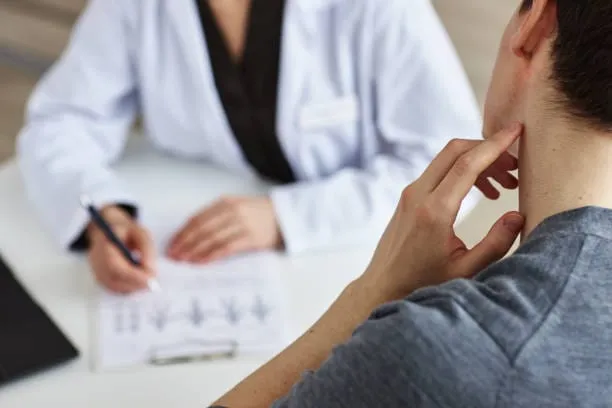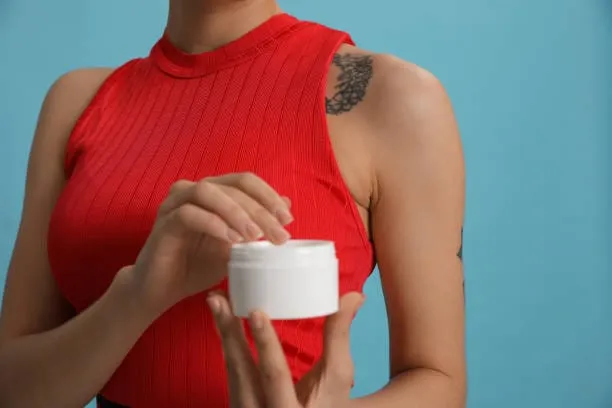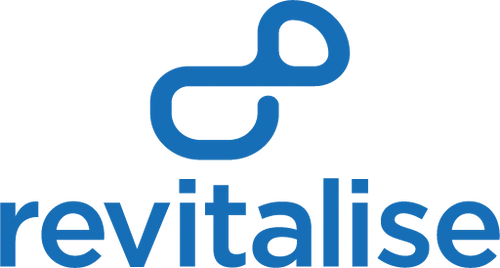Understanding the Cyst Removal Procedure: From Consultation to Healing
A Cyst Removal Procedure Explained
Cysts are often uncomfortable, look unattractive, and may cause pain. Whether they are sebaceous, epidermoid, or another kind, many people decide to have them removed if they start to bother them or become contaminated. That’s when a professional cyst removal procedure is needed.

Your doctor will perform a minor procedure in a clean setting. The process lasts between 30 and 45 minutes, and the cyst sac is removed to prevent it from returning. Knowing what to expect can help you feel better and prepare for a better recovery.
This article will teach you what to expect before, during, and after a cyst removal procedure. We’ll discuss what will be done, how pain will be managed, and when healing is expected. We want you to see clearly what cyst removal by a doctor looks like so you can be confident about your choice.
If you haven’t decided to get treatment because you’re unsure, worried about pain or scarring, this guide will explain everything in detail. Be sure to find a clinic with experience, as it makes the process easier and safer, and your results will last.
Cyst Removal Procedure Consultation And Evaluation
Before removing the cyst, you’ll discuss your condition with a healthcare expert. It is essential to do this to achieve safe and successful treatment. At this meeting, the doctor will check the cyst, examine your whole skin and decide on the best plan to remove it.
Most consultations begin with some basic questions.
- When was the cyst found?
- Is the cyst changed in size and colour, or is it painful?
- Have you been treated for any Diseases before?
During the physical exam, your doctor will also examine the cyst. They will check for inflammation, signs of Disease, and tenderness and determine if the cyst can be moved under the skin. This will help them determine whether it’s better to remove the cyst right away or wait until an Disease has been cleared.
Sometimes, a scan may be needed to check how deep and structured the cyst is, especially if it’s big or close to sensitive organs. When a cyst is suspected to be non-benign, your doctor may suggest a biopsy.
You’ll also receive information about the following at this point:
- Which treatment will be used, such as excision or drainage
- Will you be given a local anaesthetic?
- The possible results and how long they take to heal
- Whether there are risks such as Disease or scarring.
Please feel free to ask questions if you have a medical issue, are using blood thinners or have allergies to anaesthetics.
The consultation ends when you book your procedure and are given advice before the treatment. You may have to refrain from taking some drugs, keep the area clean or avoid putting on creams before you go.
How to Get Ready for Your Cyst Removal Procedure
If you have planned a cyst removal, taking steps ahead can help make the process go smoothly and your recovery quicker. Most cysts can be removed in an outpatient setting, but a little preparation helps minimise risks and any discomfort.

Here’s what you need to do to get ready for this:
- If your practitioner recommends it, stop using medications that could thin your blood, such as aspirin or anti-inflammatories, before the procedure. Always mention any prescriptions, supplements or drugs from the pharmacy that you’re using.
- Avoid drinking alcohol and smoking, because they might slow down healing and open you up to Disease. Don’t take pain relievers for at least two days before and after the procedure.
- Clean the area in the shower before treatment and don’t apply anything to the skin around the cyst. A clean body reduces the chance of bacteria getting to the site during the removal.
- When the cyst is in a sensitive area like the back, armpit, or groin, wear loose clothing so it doesn’t press against it. This position allows the Doctor to reach the cyst and makes you more comfortable afterwards.
- You only need to eat a light food, as local anaesthesia is employed and fasting isn’t necessary. However, eating before you arrive can stabilise you, especially if you feel uneasy during your appointments.
- If you can’t drive, ensure someone can take you home.
- Ensure you’ve understood everything: Before you receive treatment, check what will happen, learn about recovery and clarify what aftercare is required. Accessing the proper information helps relieve your feelings of anxiety.
Different Methods of Cyst Removal Procedures
Cysts and how doctors choose to remove them can be different. The best method depends on the cyst’s type, location, size, and whether it is contaminated. Here, we will look at the primary methods that are often used.
1. Cyst Removal Procedure with Treatments Excision
This is the safest way to remove a cyst and is most often chosen to avoid the cyst coming back. The Doctor or doctor uses a local anaesthetic to numb the area, cuts a little, and removes the whole cyst sac. Sebaceous and epidermoid cysts are best treated with this Treatments approach. Once the tumour is out, the wound is stitched up.
Pros:
- A slight risk of a cyst forming again
- Removal that is clean and managed efficiently
- Designed for cysts that are larger or deeper
Cons:
- It could lead to a small mark on your skin.
- You should give your body more time to heal.
2. The method of Incision and Drainage
People use this technique mainly for Diseases or inflammations within cysts. The practitioner makes a small cut to remove pus and lessen swelling. Yet, because the cyst’s lining stays in place, the cyst may return.
Pros:
- Quick relief from feeling pain and pressure
- An abbreviated Treatments procedure
Cons:
- It doesn’t clear the cyst entirely.
- The chance that the disease will return
3. Minimal-Incision Technique
For sensitive body parts, this refined way to remove cysts only requires a small incision and no stitches. It is most effective for tiny, uncontaminated cysts.
Pros:
- Minimal scarring
- Quick recovery
- You won’t need to get stitches.
Cons:
- Not recommended for every kind of cyst.
- Has to be performed skilfully
2. Laser-Assisted Removal
In particular circumstances, lasers may reduce or remove the tissue in cysts. This relatively new treatment is normally done along with Procedure.
Every cyst removal procedure has specific benefits and considerations. During your consultation, the specialist will analyse your skin and suggest the best treatment for your needs.
Is The Cyst Removal Procedure Painful?
Before a cyst removal, many patients ask, “Will it hurt?” Thankfully, modern techniques and local anaesthesia make the procedure nearly painless.
Your Healthcare Provider Will Apply a Numbing Cream
We always focus on making you feel comfortable. At the outset, the doctor will inject a local anaesthetic to ensure the area is painless. You won’t feel discomfort within a short time, just gentle pushing or movement.
During the Cyst Removal Procedure:
Although you won’t feel pain because of the local anaesthesia, you might feel a pushing or pulling when the cyst is being taken out. Most people say the procedure is fast and comfortable, particularly if trained staff use modern, minimally invasive methods.
Following the Procedure: Experience of Post-Treatment Sensitivity
When the anaesthetic stops working, mild soreness or swelling is usual. These signs tend to go away within a day or two, and painkillers such as paracetamol or ibuprofen can be used to treat them. A clean, cold compress can also lower swelling.
Even with complex or large cysts, the pain should fade quickly so long as proper aftercare is provided.
What To Do If You’re Nervous About Cyst Removal Procedure
If you’re worried about pain or have a sensitive system, share this with your practitioner during the consultation. All cyst removals at Revitalise London are personalised, so patients feel at ease and are always informed and supported.
With the proper anaesthesia and the right Doctor, having a cyst removed can be comfortable. Many patients discover that the procedure goes faster and more easily than expected.
Aftercare: Cyst Removal Procedure
Following aftercare rules helps your wound heal well and stay free from Disease. How you care for the area in the first few days after Procedure can decide how well you recover and your outcomes.

Bandages and Wound Dressing
After removing your cyst, a sterile dressing or bandage will be applied to the treated area. Ensure the dressing is clean and dry for the first 24 to 48 hours. Your specialist will usually explain when and how to change your bandage and may advise using clean hands and a gentle antiseptic if the situation calls for it.
Looking After Hygiene and Cleanliness
You can clean the affected area with warm water and a non-fragrant soap. Don’t scrub hard or apply anything too harsh. After patting the spot dry with a clean towel, smear on an antibiotic cream if your doctor suggests.
What You Should Know
Redness, swelling, or oozing are expected in the first days after the Procedure. Good sleep and regular hygiene often make these symptoms go away quickly. Keep your hands away from the injury, as it can make Disease and scarring more likely.
Main Tips: The Do’s and Don’ts
- Keep the spot where the leak is happening clean and free of water.
- Follow the guidance from your practitioner step by step.
- Don’t: Let the area be dipped in water (baths, pools) for at least a week.
- Don’t apply makeup or lotions unless given the go-ahead by your doctor.
Proper aftercare will smooth your recovery, help reduce scars, and support your best cosmetic result from cyst removal.
What Is the Healing Time for Cyst Removal?
How quickly you heal from a cyst removal procedure depends on the type and size of the cyst, the procedure used, and how strictly you follow the aftercare advice.
Usual Time for Healing
- Around days 1–3, your skin may be swollen, reddened and tender. Continue to keep the area covered and free from dirt.
- Most basic discomfort goes away in Week one. If your wound was closed with stitches, they might begin to come loose or be removed later.
- During weeks 2 and 3, the skin starts to repair itself. Redness and irritation decrease, but the skin may still be slightly pink.
- One Month and Beyond: The wound has typically closed up. It will take a few more months for the scar to disappear completely.
Cyst removal using minimally invasive techniques usually leads to a simple recovery. It’s best to give yourself time to heal correctly.
When is It Safe to Go Back to Your Regular Schedule?
Small cysts and simple excisions can usually be treated with a day of rest, although you should avoid working out the treated area for a few days. A cyst found in a mobile location, such as the back or underarm, may take longer to heal.
Pay Attention to These Symptoms
Although it is uncommon, sometimes Disease or delayed healing can happen. Call your clinic if you spot any of these changes.
- Never-ending swelling or pain
- The discharge may be yellow or green.
- A fever or symptoms of chills
Sticking to the instructions you receive makes it easier for your cyst removal to heal and leaves little to no scarring behind. Talk to your practitioner if you are unsure about any stage of your recovery.
How the Skin Looks After Cyst Removal Procedure
Many people worry about scarring after having a cyst removed. Although any cut in the skin can result in a scar, most scarring from cyst removal disappears over time, especially when you follow the recommended care and see professionals.
What Kind of Scar Will You Develop?
A scar’s appearance is affected by various things.
- Size and how deeply the cyst is found
- Where the scar appears
- The method of removing the cyst
- Your skin’s type and its ability to recover
An excision could leave a straight-line scar, but an incision and drainage method often results in no visible scar. At Revitalise London, we always choose the minimally invasive method first, ensuring good results and appearance.
What You Can Do to Reduce Scarring After a Cyst Removal
Carefully follow your Doctor’s recommendations, especially for the first 2–3 weeks.
- Avoid going out in the sun on the healing skin and use sunscreen once the area has sealed up.
- After completely healing your wound, use silicone gels or sheets to help minimise scars.
- Be sure to give your skin plenty of water and moisturise it regularly.
After a while, even noticeable scars will soften and blend with your skin colour. At Revitalise London, our experts remove the cyst and work to improve the condition of your skin afterwards.
Schedule Your Cyst Removal Procedure at Revitalise London
It’s important to us at Revitalise London that cyst removal is about fixing the physical issue and helping you feel, look, and feel better and more confident. As a result, we make sure your whole treatment journey is safe, professional, and tailored to your requirements.
You Can Rely on Our Experienced Experts
Our staff is qualified to perform cyst removals and has years of experience. Even if your cyst is inflamed, causes pain, or is just a concern because of how it looks, we remove it using the latest and safest methods to keep the rest of your skin safe.
Personal Care Plans
Cysts are all different, and the same is true for our patients. We offer personalised treatment from the start of your consultation until your follow-up. Considering the cyst’s size, position, and type, we decide on the best Procedure to help the wound heal and result in minimal scarring.
Newer Techniques Cyst Removal Procedure for Treatment
You can choose from several removal methods that we provide.
- Treatments removal for any cyst that is deep or comes back
- Techniques that minimise the number and size of Treatments cuts
- Using a laser to remove a cyst in the right cases
- We rely on the latest technology to minimise pain and improve your treatment.
- A place that is neat, inviting and not uncomfortable.
We value your privacy and want you to be comfortable. At our clinic, you will find a relaxed and clean place to calm your nerves before, during, and after your cyst removal. We offer support and advice after the treatment, and you can reach us with any questions.
Support That Includes All Areas Of Recovery
We perform the procedure and also guide you toward healing well. We guide you from recovery, managing pain, reducing scars and tips for good skin care.
Revitalise London isn’t just a clinic—we help you achieve and maintain clearer, healthier skin. If you decide to have your cyst removed by us, you can expect experienced care, kindness and results you can count on.
Our Medical Team
Meet the experienced professionals who will provide your care
Nathalie Emmanuel
Actress - Game of Thrones Star
Had a wonderful experience with Dr Ken and his staff with my forehead lipoma removal. Thorough in planning before the procedure and so far, l've had a great experience with aftercare. When I had any questions there was always someone available to answer them.





